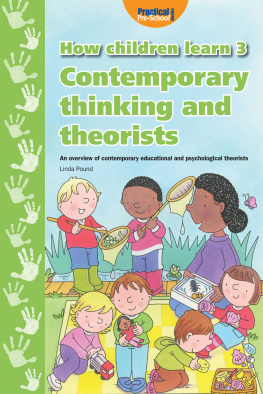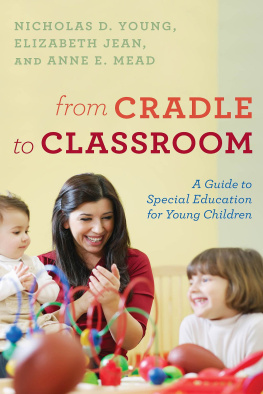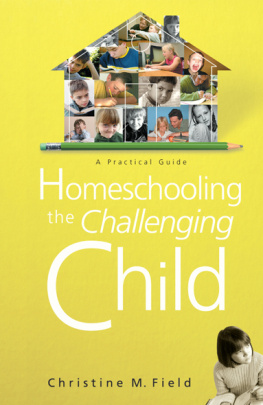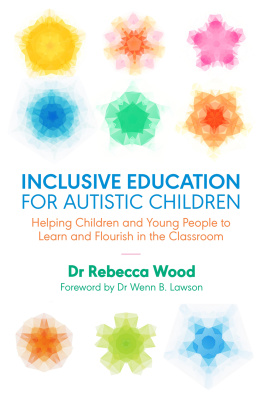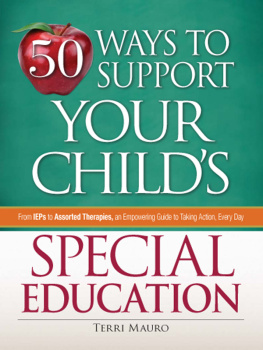Title page
How children learn 4
Thinking on special educational needs and inclusion
by Shirley Allen and Peter Gordon
Copyright page
Published by Practical Pre-School Books,
A Division of MA Education Ltd,
St Judes Church, Dulwich Road, Herne Hill, London, SE24 0PB
Tel: 020 7738 5454
www.practicalpreschoolbooks.com
MA Education 2011
2012 digital version by Andrews UK Limited
www.andrewsuk.com
Images down the side of the front cover (in order from top to bottom):
Professor Reuven Feuerstein supplied with kind permission by Reuven Feuerstein, John Dewey Bettmann/CORBIS, Jean Piaget supplied with kind permission by Mary Evans Picture Library and Abraham Maslow Ann Kaplan/CORBIS.
Illustrations including the cover image: Cathy Hughes.
All rights reserved. No part of this publication may be reproduced, stored in a retrieval system, or transmitted by any means, electronic, mechanical, photocopied or otherwise, without the prior permission of the publisher.
Introduction
This book is the fourth in the How Children Learn series. It considers the contribution made by a range of theorists, educational thinkers and practitioners to current ideas and practices about how young children learn and develop, with a particular focus on how we can support children with additional needs. Educational theorists and thinkers, both classical and contemporary, have an important influence on current inclusive practice within the early years.

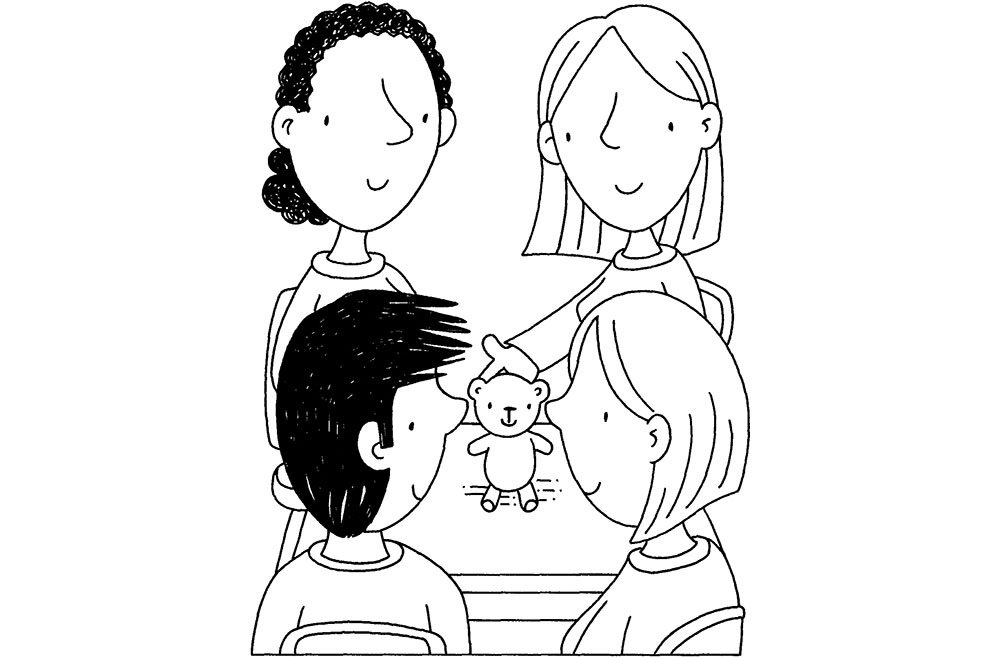
As we have seen in the previous books in the series, theories and thinking on education can be developed from research, experimentation, philosophical ideas or experiential considerations. However they are arrived at, one common strand is the importance of observation of real people in real contexts. All the theories, ideas and philosophies explored in this book have been developed and honed by academics and practitioners who have observed how people, including children, learn.
The focus of the first book in the series was generally on individual theorists such as Susan Isaacs and John Comenius, and, in addition, there were some general sections which looked at influential education approaches such as High Scope and Forest Schools. There were also sections on important aspects of early education such as Learning Through Play.
The second book was more concerned with trends and developments rather than individual theorists. It considered how both classical ideas and modern progressive ideas have made an impact on current thinking and practices. The book mostly considered the way that theories about talking, literacy, creativity and intelligence have grown out of other peoples theories and then further developed new thinking in these areas.
In the third book, contemporary thinkers and theorists were highlighted such as Tina Bruce and Guy Claxton, who are currently influencing ideas about the learning and development of young children. There were also topics of interest to contemporary practitioners such as Gender Issues, Moral Development and Learning Outdoors.
About this book
This book, the fourth in the series, focuses on theorists and thinkers who are currently influencing ideas about the learning and development of young children, particularly those with additional needs, and about inclusive practice in early years settings. In the second part of the book, a range of topics will be explored which are highly influential in promoting inclusive practice and are of particular interest to todays practitioners. Examples of practice in the book demonstrate how educators have looked beyond labels, diagnoses and particular settings and considered individual factors to ensure that children with additional needs are both prepared for and accepted within society. (1)
Most sections are laid out in a consistent pattern. There are some key facts to place the theory or thinking within a context. The theory is explained and titles of the main publications are listed. Theory is then linked to practice with examples where relevant. Each section has a Comments area which is there to encourage some critical and reflective analysis of the content.
There are a great many links between the theorists, their theories and the other ideas presented in this book and in the series as a whole. These links are highlighted to encourage the reader to explore beyond the current page. It is our hope that readers will use these pages as springboards into further reading and research and will want to find out more about how children can be included and their learning developed.
This book deals with a huge amount of theory and understanding about the education and development of young children and those with additional needs. It can be just a brief introduction to these ideas which will hopefully stimulate the interest of readers to find out more. We are conscious that we will have omitted many potential thinkers and theorists who have also been influential in developing inclusive practices, but this is inevitable given the choices we have had to make.
Reference
Hickman, C. and Jones, K. (2005) Inclusive practice for children with Special Educational Needs in Waller, T. (ed) An Introduction to Early Childhood . London: Paul Chapman

Notes to students
Every effort has been made to make sure that you have all the information you will need to cite sources in your own work. You may need to rearrange these references in your work in order to satisfy the specific demands of tutors and accreditation bodies. You would be wise, before you hand in your assignments, to double check that you have indeed met the requirements relevant to your particular course or place of study.
Each section contains guidance to help you track down more information for yourself. The information in this book is just the beginning as there is much more available material to be read, discussed and learnt from the work of the eminent thinkers and theorists that we have introduced to you. It is worth checking to see whether your library (public, college or university) can help you find some of the texts we refer to.


Words of warning
Take extra care about referencing accurately. Any written work should include clear references to all sources used, whether you have just used their ideas or quoted directly from their work. You want to avoid being accused of plagiarism, which can be a very serious academic offence, through carelessness or inaccuracy.
Be very cautious about the use of web sites. They can be a really useful and helpful source of accurate information. They can also be misleading, inaccurate or purposefully mischievous. They may just be simply out of date. It is always sensible to reflect on who is publishing the information and why. It is just possible that they are trying to get you to buy something or are presenting a particular viewpoint to sway your opinion.
Any website addresses given in this book were valid and accessible at the time of going to press.
Next page
